Subscriber Benefit
As a subscriber you can listen to articles at work, in the car, or while you work out. Subscribe Now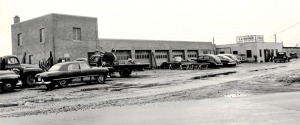
 Indianapolis-based F.A. Wilhelm Construction Co. Inc. has left large and plentiful footprints all over Indiana and beyond during its 100 years.
Indianapolis-based F.A. Wilhelm Construction Co. Inc. has left large and plentiful footprints all over Indiana and beyond during its 100 years.
Founder Francis A. Wilhelm Sr. created the company in 1923 out of his desire to build better buildings and create a better life for his growing family.
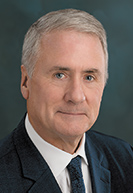
Within three years, he laid the groundwork for a company that for years has been on IBJ’s list of the state’s 50 largest private companies. It also is the largest construction contractor in Indiana and the 79th largest in the nation, according to Engineering News-Record, with 3,000 full-time employees and 2022 revenue of $1.4 billion.
Today, the company’s president is Phil Kenney, Wilhelm’s grandson. He is the third generation of the family to lead the firm; Kenney took over when his uncle Jim Wilhelm retired in 2001 after about 30 years at the helm.
IBJ talked to Kenney, 62, about what it means to lead his family’s company into its second century, what projects have given him the most fulfillment and what the future holds.
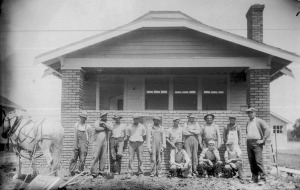
How has Wilhelm Construction survived and prospered for 100 years?
My grandfather was a bricklayer and started the business in 1923 as a young man with a dream. As Indianapolis and Indiana grew, so did the company. He started out building homes around here (south side of Indianapolis), some of which are still standing. We survived the Depression and World War II. He grew from a masonry contractor to a general contractor and took on larger projects, like schools, churches and industrial facilities.
He hired good, hard-working, smart people to assist him. As projects got bigger, the company got bigger, and he hired more people. He developed a reputation for quality work. He stood behind his work. If something went wrong or there was a warranty issue, the company went in and fixed it. It allowed him to keep a lot of long-term repeat customers. He was bigger than life. He built the company. Then in the early 1970s, one of my uncles, Jim, took over and continued building it.

What does it mean to you personally to carry on your grandfather’s legacy?
My grandfather and uncle—both of them were great leaders. It means the world to me to carry on that family legacy. The tenets of hard work and serving our clients, it’s a pretty simple recipe that we have maintained.
What was the succession plan that led you to become president?
If you worked hard here, showed up for work on time and did all those simple things, you had a position at Wilhelm, whether you were a family member or not. … Since I’m a family member, I have to believe there were more opportunities given to me than others. But more was expected of me as a family member, too. You had to earn the position to get it. You’re given nothing but a chance. Just like my uncle, I had to earn it. My uncle was a bricklayer and went to [the University of] Notre Dame, and we had very similar paths.
How did you advance in the company?
I started working here after eighth grade in the summer in 1976. I didn’t have a driver’s license, so I’d ride to work with my uncle. I unloaded train cars and trucks and did simple labor outside. As I went through high school in the summers, my uncle moved me into the office before my senior year in the estimating department, where I learned about estimating the cost of bidding on projects. … In college, I worked again in the office after my freshman year, and the other years I went out on construction projects, doing simple engineering work, answering questions and sending out documents.
After graduation [from Purdue University with a degree in civil engineering], I became manager of our small projects group in 1985, where we do small projects for clients, for about 10 years. Wilhelm owns a mechanical construction company in Terre Haute, and I went there to be president until the end of 2000. Then, my uncle told me, effective Jan. 1, 2001, I was going to be president and he was retiring.
What struggles or challenges have you faced along the way, particularly since becoming president?
The biggest one was the recession of 2008 and 2009, when we had a downturn of the economy. We had to look at ways to reduce expenses. We had to lay off some people but were able to keep the vast number of workers. We reduced expenses like memberships and charitable expenses. The harder cuts are when employees are affected. Building slowed down somewhat, but not significantly.
The pandemic didn’t affect us. Construction was considered an essential business. We did have to adapt to all the new rules, in terms of distancing, vaccinations and masks. But we were able to continue working because of our employees. They adapted, and we got through it.
Personally, I have been blessed with a wonderful wife [Colleen] who basically raised our five children. You have to have a strong family life. I’ve had some pretty long hours. I understand what a challenge it is for today’s families to do those things.
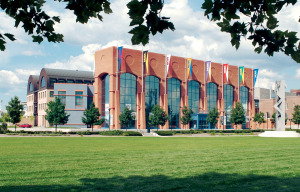
What are some of the largest construction projects Wilhelm has undertaken?
Over our 100 years, [we’ve done] well over 11,000 projects. We’re known for the Union Station in downtown in the 1980s, which really kick-started the revival of Indianapolis. We constructed the [Indiana University] Assembly Hall, which is still standing, the IU Musical Arts Center, a beautiful building, the Eiteljorg Museum and the NCAA downtown headquarters, which are all pretty well-known, and many others. One of the largest projects we’re working on now is the new IU Health hospital in downtown Indianapolis.
But we also do a lot of small project work for our clients, too, like the Monon Trail. We’re putting in more safety features on the Monon Trail. Those are the types of projects we take as much pride in because of what they mean to the community.

What is a particular favorite or challenging project Wilhelm has done?
Of all the ones we’ve built, I’m most proud of the Indiana State Museum on the downtown canal. It was a challenge to build because of its location and the way it’s laid out. It highlights all of the different parts of construction that we do with our own employees. We hire our own bricklayers, carpenters, iron workers and others. We have well over 3,000 or 4,000 employees, depending on the time of year. The museum highlights the craftsmanship we have as a company. Even after so many years [since opening in 2002], the museum means a lot to me and our company.
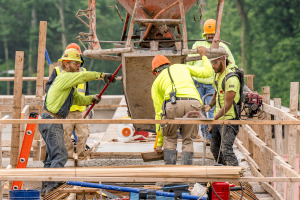
How has Wilhelm had to change over the years?
Your company has to change with the times, and we’ve been able to do that, not just in the markets we serve, but in the way we build. The first way is safety on the construction site. … Over the past 25 years, we’ve changed the safety culture of our company because our whole industry has changed, and it’s the right thing to do. In working in high-rise construction, for example, the way we move people and materials, the techniques we use are much safer now.
We’ve also invested in technology to make us more productive and more cost-effective to the clients we serve. We track productivity much more closely. … If we see it slipping, we track that and use technology, including drones to see how the job site is set up and software associated with tracking productivity. You get information so much faster, so you can make changes more quickly.
What are the biggest challenges you foresee in the next five years, and how are you preparing for them?
I think the biggest one is bringing in more people into the workforce and the diversification of our workforce. We need to diversify in gender, age, race, as we try to introduce more people to the construction industry. The population of Indiana is projected to be pretty flat. High school graduation rates are flat and will start dropping.
We are recruiting in high schools and various colleges that may or may not have a construction program, where we can hire smart, hard-working people and teach them construction. We have to have a very disciplined approach and invite them into our industry. We work with unions, universities and high schools, the Indiana Construction Roundtable Foundation and industries. We’ve also adjusted our work hours, so if you have to drop a child off in day care, we’ve adjusted to that.
How is your company marking and celebrating its 100th anniversary?
We had a big annual company meeting in February for employees. This summer, we have a big picnic with all family members. As part of the 100th anniversary, we are planning to support 100 not-for-profit organizations based on feedback from our employees. We will take their recommendations and donate a sum of money to each organization by the end of 2023. … We’re still working on the entire amount, but it will be a sizable amount of money.
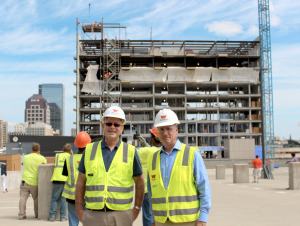
Do you have a succession plan for when you decide to step down as CEO?
I have a first cousin, Chris Wilhelm, in the business who runs all our field operations. I have two sons in the business, and [my cousin] has a son in the business. In addition, we have more excellent people in the company. We’ve started those discussions. But I have no immediate retirement plans. When you’re healthy and love what you do, it makes it easier to go to work.•
Please enable JavaScript to view this content.

Loved reading this story. A perfect example of what a business journal can do to inform the public. Congrats to Wilhelm for its success and its still-aroundness.
Agreed. A solid legacy in Indianapolis. Here’s to continued success!